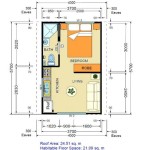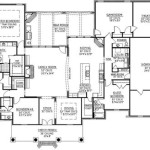Essential Aspects of a House Plan
Designing and building a house is a significant undertaking that requires careful planning and attention to detail. A comprehensive house plan serves as a blueprint for the entire project, ensuring that all aspects of the construction are considered and executed seamlessly. Several key elements are essential to a well-crafted house plan, encompassing both functional and aesthetic considerations.
1. Floor Plan
The floor plan defines the layout and organization of the interior spaces. It should consider the number and size of rooms, their intended purpose, and the flow of traffic between them. A well-designed floor plan optimizes space utilization, maximizes natural light, and ensures a comfortable and functional living environment.
2. Exterior Design
The exterior design of a house encompasses the architectural style, facade materials, and overall aesthetic appeal. It should complement the surrounding environment, express the homeowner's preferences, and meet the local building codes. Considerations include rooflines, windows, doors, exterior finishes, and landscaping.
3. Structural System
The structural system provides the foundation and support for the entire house. It includes the materials and techniques used to construct the walls, floors, roof, and foundation. The structural system must ensure the stability, durability, and safety of the dwelling.
4. Mechanical Systems
Mechanical systems are essential for the comfort and functionality of a house. They include heating, ventilation, air conditioning (HVAC), plumbing, and electrical systems. These systems should be designed to meet the specific needs of the occupants, ensuring adequate temperature control, air quality, and energy efficiency.
5. Energy Efficiency
In today's environmentally conscious era, energy efficiency has become paramount. A well-designed house plan incorporates features that minimize energy consumption and reduce environmental impact. This includes energy-efficient appliances, insulation, windows, and renewable energy sources.
6. Site Planning
Site planning involves the placement of the house on the lot and the integration of outdoor spaces. Factors to consider include orientation towards sunlight, accessibility, drainage, and landscaping. Effective site planning enhances the overall functionality and aesthetic appeal of the property.
7. Legal Requirements
It is crucial to adhere to all applicable building codes and regulations when designing a house plan. These codes ensure the safety, structural integrity, and habitability of the dwelling. Compliance with legal requirements is essential to obtain building permits and avoid potential legal issues.
Conclusion
A comprehensive house plan is the cornerstone of a successful building project. It provides a roadmap for every aspect of the construction, ensuring that the finished home meets the homeowner's needs and expectations. By considering the essential elements discussed above, architects and designers can create well-crafted plans that translate into beautiful, functional, and enduring dwellings.

House Plans How To Design Your Home Plan

House Plans How To Design Your Home Plan

House Plans How To Design Your Home Plan

House Plans How To Design Your Home Plan

How To Read A Floor Plan With Dimensions Houseplans Blog Com

Small House Design 2024001 Pinoy Eplans Floor Plans

Where You Can Buy House Plans Live Home 3d

House Plans How To Design Your Home Plan

How To Read Floor Plans 8 Key Elements A Plan Foyr

10 Things To Consider In A House Plan Ck








